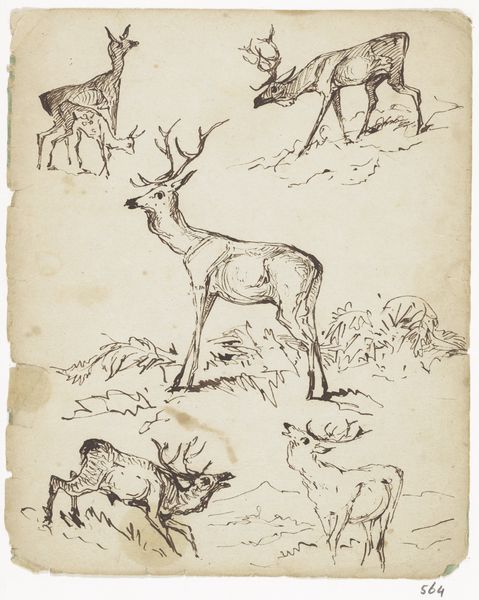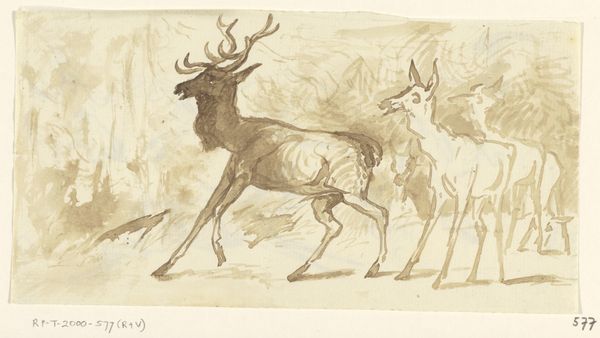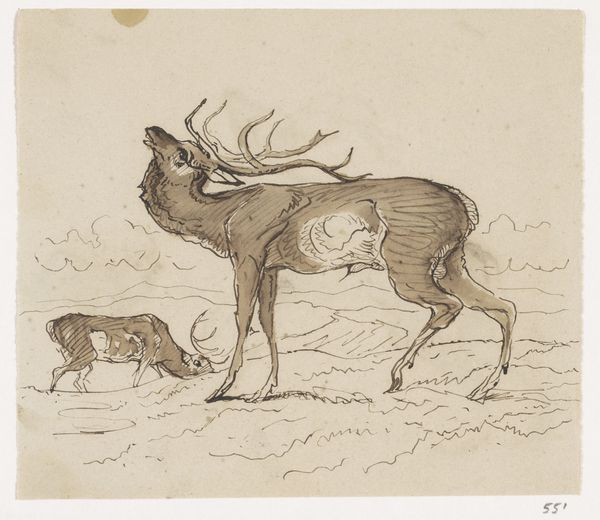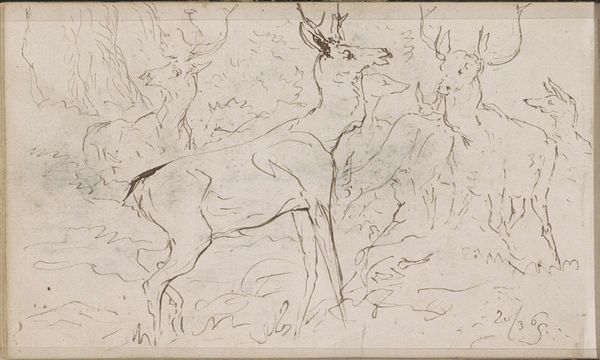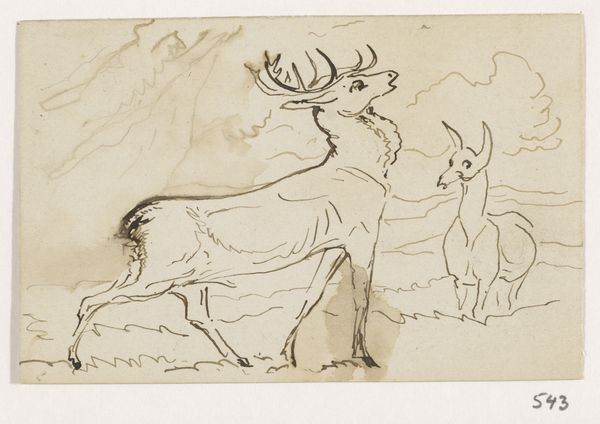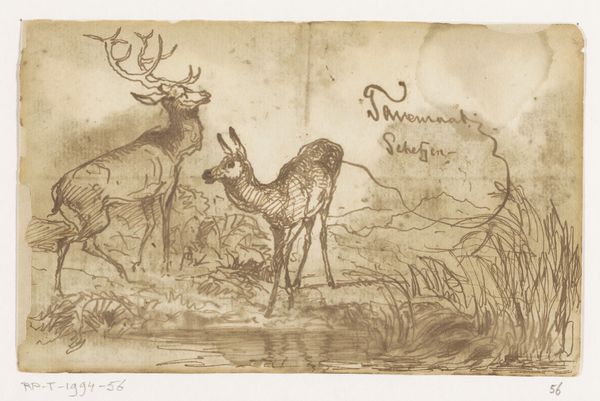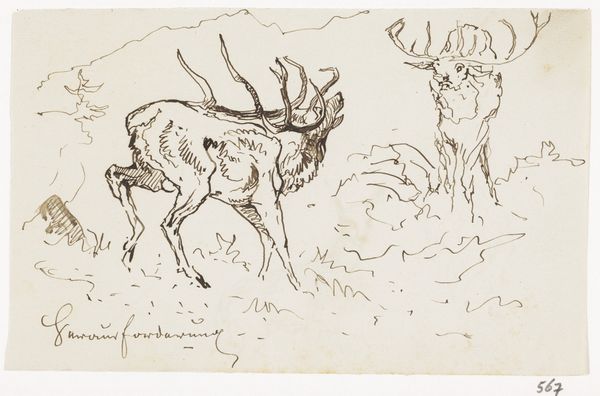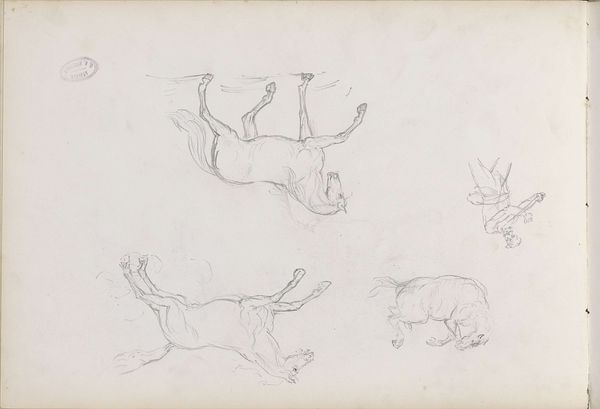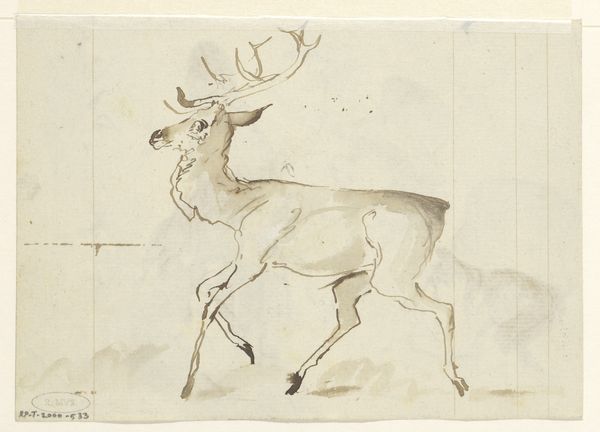
drawing, paper, ink
#
portrait
#
drawing
#
pen sketch
#
landscape
#
figuration
#
paper
#
ink
#
genre-painting
Copyright: Rijks Museum: Open Domain
Editor: This is "Herten en mannenkoppen," which translates to "Deer and Men's Heads," a pen and ink drawing on paper by Johannes Tavenraat, dating somewhere between 1864 and 1880. It's quite an interesting mix of subject matter, isn't it? What stands out to you the most when you look at this piece? Curator: What immediately grabs me is the raw, almost industrial feel achieved through the ink. Consider the paper, likely a mass-produced substrate even then, designed for function more than posterity. And then there’s the ink itself – a manufactured substance, highlighting the artist's reliance on external, commodified materials. Tavenraat depicts studies of both men and animals: Does that imply the artist may have treated them on equal footing, as a worker treats his different materials of labour? Editor: That's a really interesting way to look at it! I hadn't thought about the materials themselves in that way, but it makes sense, considering the time period. The sketches feel very immediate. Is it common for an artist to join studies of men and animals, side by side? Curator: Perhaps these figures were not intended for "high art," destined instead to exist as part of the means of artistic production - something disposable. The proximity of the figures makes me wonder about the context of 19th-century artistic training and how artists learn to manipulate the available means for making representational studies of bodies: Could this juxtaposition speak to the societal structures influencing artistic practice? Editor: That makes me see the drawing as less precious, almost like a page from a workbook. Thank you! It’s fascinating to consider the materials and their context within Tavenraat’s creative process, seeing how they reflect broader industrial and societal themes. Curator: Exactly! Reflecting on materiality prompts a new understanding of what this artist was attempting.
Comments
No comments
Be the first to comment and join the conversation on the ultimate creative platform.
